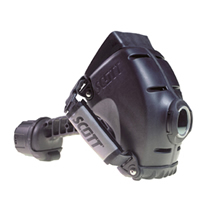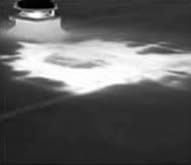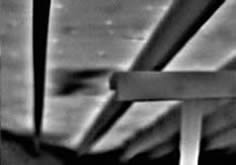|
 This advanced technology will amaze you. IR inspections will find the source of leaks and dampness or areas of heat loss. It is like a diagnostic MRI for your home. Some problems are not visible during a routine home inspection. However, an IR camera can detect "invisible" problems such as moisture, glowing electrical wires, or termite nests. This service can be invaluable for home buyers and home sellers. One of the bigger issues facing a new home owner is finding out they have "hidden" and costly electrical or mold problems that must be addressed immediately. Additionally, many people putting their home on the market are unaware they have these problems. When a prospective buyer finds out about the problem, they may ask for a large credit to cover the cost of fixing the problem thereby cutting into the seller's profits. Worse yet, they may simply walk away from the deal. An IR inspection is an inexpensive way for buyers and sellers to detect problems that could end up costing thousands of dollars to repair. When the safety factor is figured in, an IR inspection is priceless. This advanced technology will amaze you. IR inspections will find the source of leaks and dampness or areas of heat loss. It is like a diagnostic MRI for your home. Some problems are not visible during a routine home inspection. However, an IR camera can detect "invisible" problems such as moisture, glowing electrical wires, or termite nests. This service can be invaluable for home buyers and home sellers. One of the bigger issues facing a new home owner is finding out they have "hidden" and costly electrical or mold problems that must be addressed immediately. Additionally, many people putting their home on the market are unaware they have these problems. When a prospective buyer finds out about the problem, they may ask for a large credit to cover the cost of fixing the problem thereby cutting into the seller's profits. Worse yet, they may simply walk away from the deal. An IR inspection is an inexpensive way for buyers and sellers to detect problems that could end up costing thousands of dollars to repair. When the safety factor is figured in, an IR inspection is priceless.
Does this roof leak? Yes!
 
Fast detection and fast action:
IR Infrared Thermographic Inspection is a powerful and non-invasive means of monitoring and diagnosing the condition of buildings. It provides immediate documentation of plumbing and building envelope water leakage, energy use inefficiency, and electrical problems.
Moisture and mold:
Moisture in building materials can destroy structural integrity and nurture mold and insect infestations. IR cameras distinguish between wet and dry materials by exploiting the thermal characteristics of wet materials. These characteristics include the ability to store heat very well and to warm up or cool down more slowly than dry materials. Mold in particular is a growing concern for lenders, developers, and home owners because of the growing number of filings of health-related tort claims. Certain molds can cause a variety of adverse human health effects. The first step in mold remediation is to quickly and accurately locate and remove all sources of moisture. IR cameras can instantly take an image of an entire room, inspect places that can’t be physically reached with moisture meters, reveal wet conditions behind surfaces such as enameled walls and wallpaper that don’t readily water stain, track leaks to their source, monitor the drying process, and confirm when a structure is dry.
Energy efficiency:
IR thermography is a well accepted method of imaging and evaluating the thermal efficiency of building insulation, doors, windows and other penetrations, and the efficiency and condition of heating and cooling systems. Temperature anomalies revealing problems are rendered visible, enabling needed repairs to be made with confidence.
About thermography:
Thermography is the use of an infrared imaging and measurement camera to "see" and "measure" thermal energy emitted from an object. Thermal, or infrared energy, is light that is not visible because its wavelength is too long to be detected by the human eye; it's the part of the electromagnetic spectrum that we perceive as heat. Unlike visible light, in the infrared world everything with a temperature above absolute zero emits heat. Even very cold objects, like ice cubes, emit infrared. The higher the object's temperature, the greater the IR radiation emitted. Infrared allows us to see what our eyes cannot. Infrared thermography cameras produce images of invisible infrared or "heat" radiation and provide precise non-contact temperature measurement capabilities. Nearly everything gets hot before it fails, making infrared cameras extremely cost-effective, valuable diagnostic tools in many diverse applications. And as industry strives to improve manufacturing efficiencies, manage energy, improve product quality, and enhance worker safety, new applications for infrared cameras continually emerge.
How the IR camera works:
An infrared camera is a non-contact device that detects infrared energy (heat) and converts it into an electronic signal which is then processed to produce a thermal image on a video monitor and perform temperature calculations. Heat sensed by an infrared camera can be very precisely quantified, or measured, allowing you to not only monitor thermal performance, but also identify and evaluate the relative severity of heat-related problems. Recent innovations, particularly detector technology, the incorporation of built-in visual imaging, automatic functionality, and infrared software development, deliver more cost-effective thermal analysis solutions than ever before.
Why get an Infrared Thermographic Image Inspection?
A picture says a thousand words; infrared thermography is the only diagnostic technology that lets you instantly visualize and verify thermal performance. Nearly everything that uses or transmits power gets hot before it fails. Cost effective power management is critical to maintaining the reliability of your electrical and mechanical systems. Today no one would argue the proven predictive maintenance of infrared thermography and its effectiveness. IR technology quickly, accurately and safely locates problems prior to failure. Finding and fixing a poor electrical connection before a component fails can save you the much greater costs associated with manufacturing downtime, production losses, power outages, fires and catastrophic failures.
Call us to today to see if an Infrared Thermographic Image Inspection is right for you.
|